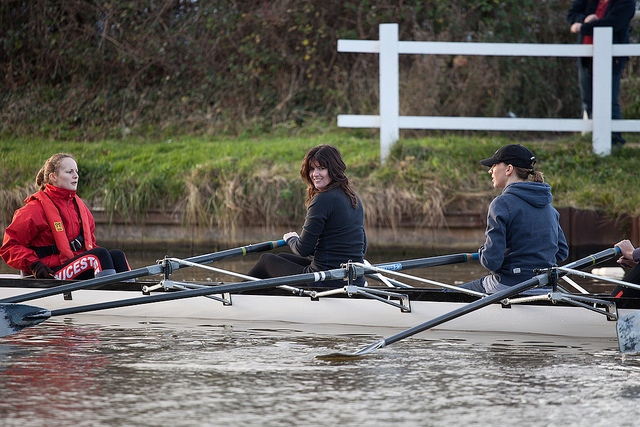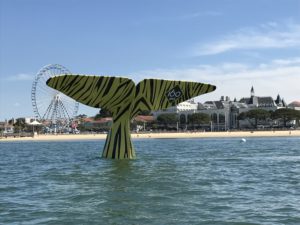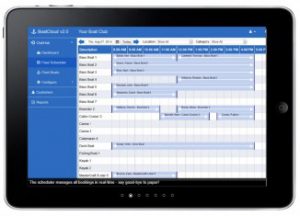In his article “What Shape is your Rowing Club?” Duncan Holland introduced the ‘Hourglass’ model which represent many clubs, with many Masters and Junior members but few Seniors. Until recently my club was in the same position.
The club has always had a large junior squad, but we would lose our older juniors who moved away to study or work elsewhere. We tend to attract masters rowers who move into the local area, but we never used to have senior squads of more than a dozen rowers and, some seasons, even fewer.
What can you change?
The problem which many clubs face, especially those who find themselves in the ‘hourglass’ shape, is one of coaching. Experienced senior rowers usually want to race rather than spend their time coaching. Some of the masters will coach but are unlikely to be able to give enough time to cover the entire competitive portion of the membership. We typically don’t get many experienced rowers coming to us, so the fastest way to expand our senior membership was to ‘grow’ our own.
At the club we were lucky to have one member who coached the development women’s squad. We would run Learn-to-Row courses, organised by a handful of members, but retention was low. The women’s squad began to grow because they provided a transition route through from beginner to senior rowing. The men’s squad struggled to retain members. Six months after a Learn-to-Row course our average member retention was probably around 30%.


We identified the potential of the Olympics and World champs in boosting membership, but had to make some big changes to maximise the benefit. We signed up for British Rowing’s Explore Rowing, which provided stable boats for beginners to learn in, and an alternative route to racing; recreational rowing. A small group of members took ownership of the Explore Rowing beginners courses and the club made a big move towards encouraging members to give up a few hours on Sunday afternoons to help coach the courses.
The big breakthrough came through encouraging more and more members to coach the beginners courses. People don’t need coaching qualifications, or even years of experience, to coach. Some of our best beginners coaches only learnt to row on the previous course. Existing members could see lots of keen new recruits coming into the club, bringing money for more equipment and providing future crew-mates. With more volunteers we can offer one-to-one coaching for our beginner crews. The rowers progress more quickly and get much greater value from the course. They also join the club with an appreciation of the volunteer culture we’ve created. The system gains momentum with each course and the aim is to develop volunteers who are able to run the courses in the next 12-18 months.
Has it worked?
We started the new course structure 18 months before the Olympics and have found that we are retaining members at a much higher rate – approx 80%. The development groups are working well in bridging the gap between beginner and senior rowing.
With the influx of applications for Learn-to-Row, we have a waiting list for our Learn-to-Row courses, despite running two courses in parallel. We have identified a time-slot in the evenings where a small group of beginners could be coached and used this time to run a Fast-Track course. The club is still lacking senior men, so we’ve used the Fast-Track course to try to target this problem. We invited men who are athletic or have recently been involved in other sports into this group as they would be quickest to adapt to a more condensed beginners course.
We now have lots of novice rowers who, with the right development, will be competitive senior rowers in a few years. We’re moving quickly towards a more balanced club structure. This presents its own challenges in terms of session times and equipment, but a busy club is a good challenge to have.
Related articles
What shape is your rowing club?








This Post Has 3 Comments
Great article. A very similar model is used at my club with great success. It relies hugely on volunteer coaches, and so coach development pathways are really important. (We sometimes offer to co-sponsor BR coaching courses and launch driving). Retaining volunteer coaches is often the key to retaining learn to row participants …. And breeding new coaches. Clubs can never stand still on athlete and coach and Cox pathways so it is great to read how it is working for your club.
Interesting article.
Could you advise how you got the message out so that people know that there is such a course on offer? You say you have invited men whom are athletic to participate . How did you find them?
My experience is that newcomers to our club on a Masters level , are mainly those who have an interest in rowing by virtue of their children who are rowing , or have in the past, at school level.
As to senior rowers , this source is entirely through a continuation after leaving school.
Thanks
Fenton, thank you for your response. Indeed it is not easy to find the right and talented people. We will post your question in our FB and Twitter audience. Be sure you get many answers and proposals